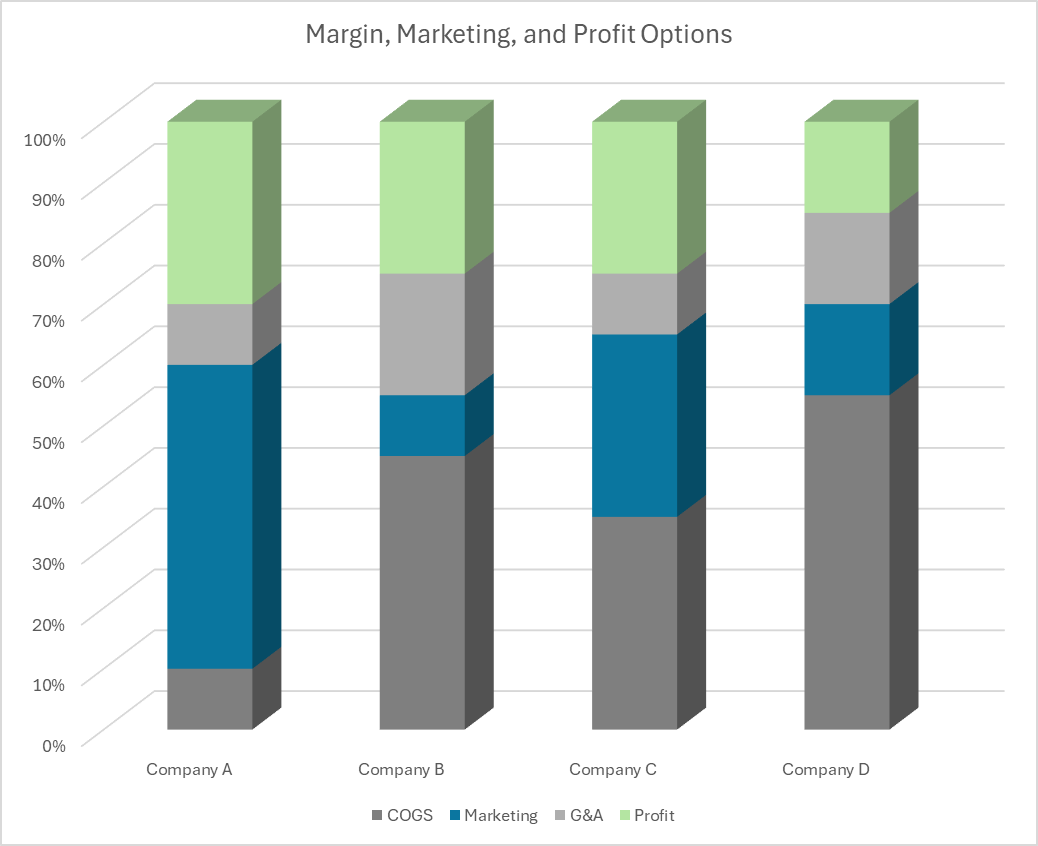
Optimize Your Marketing Strategy for Growth and Efficiency
We help agencies, small businesses, and PMOs optimize their marketing strategy through diagnostics, fractional CMO support, and delivery consulting … so you can scale smarter and execute better. Our evaluation model:
Business Model: Are most of your costs fixed and almost all margin on sales (minimal variable costs?) Do you have a fixed quantity (hotels, airlines, theatres?) Are you constrained by limited or excessive inventory?
P&L Implications: High-margin or low-margin? Overhead and G&A expenses? What profit margin or marketing contribution are you held to? Is ownership focused on rates or absolutes (25% profit vs $4MM profit?)
Brand Maturity: Do people know you exist? Does your brand instill confidence in people? When people see your ad, do they say, “Guys, we need a reason to buy this!” Do people know what you do and what your value is?
Delivery: Can the solution be sent electronically? Does it need to be shipped? Does it need to be picked up in person? Can it be initiated quickly, is it complete soon?
Need-State: Is this an impulse purchase made regularly? Is this something that is a once-and-done? Is it an infrequent luxury experience? Is it a staple or commodity with high volume?
Order Value or Lifetime Value: Can you track consumers over time? What is repeat or household usage?
From Metrics to Meaning
Optimization isn’t just about spending smarter; it’s about thinking sharper.
Before diving into tactics, we help you step back and look at the whole system: your business model, your P&L, and what you can realistically afford to pay for a customer. That’s just the first step.
From there, we explore how much latitude you have in testing, what attribution models actually reflect your customer journey, and where your assumptions might be costing you. If you’re relying solely on direct attribution, you’re likely missing more than half the inputs driving sales.
Just because you can afford to pay more doesn’t mean you should. Optimization gives you upper and lower bound, but strategy tells you when to stop or go further.
Market Research: Figure out where your product sits in the marketplace.
Bid Competition: When buying ads or buying keywords, who are you competing against, and how much are they paying? It may not be your product competitors. If your terms are used by realtors or car dealers, ouch!
Click to Buy: Do you have data showing the propensity to go from an impression to a click to a purchase?
Audience: Do you know your target? Do you know where they are? What else are they buying?
Test & Learn: Try out all the sides of the media spectrum, which media, ads, messaging, spend levels drive better ROAS? Use small investments to learn rapidly and validate your initial assumptions.
Go Big: As long as you are getting incremental growth, keep investing in the marketing growth engine as long as you are below your “affordability limit” and your MRR is positive.
Measure, Learn & Adapt: Saturation, audience fatigue, and competitive shifts can impact performance. Keep your eyes on the numbers and adjust when you see something change. If you’ve hit a wall, go back and look at the assumptions you made in the first part of the evaluation. You may be better off trading growth for profit or maybe you can afford growth because there is still more room in your P&L and business model.
Custom Diagnostics, Strategic Roadmaps, and Fractional Leadership .
From Chaos to Clarity:
Marketing Optimization That Works
Why Optimization Fails: Common Pitfalls We Help You Avoid
Over-indexing on short-term ROI while ignoring long-term brand equity
Treating attribution as truth instead of a model
Scaling spend without ring-fencing customer segments
Confusing affordability with sustainability
Optimizing in silos without aligning delivery, messaging, and team capacity


